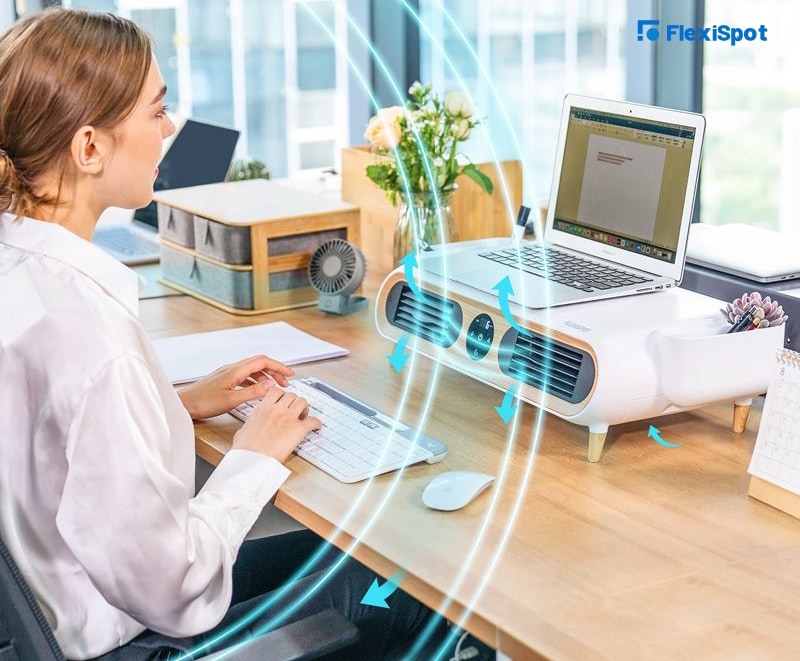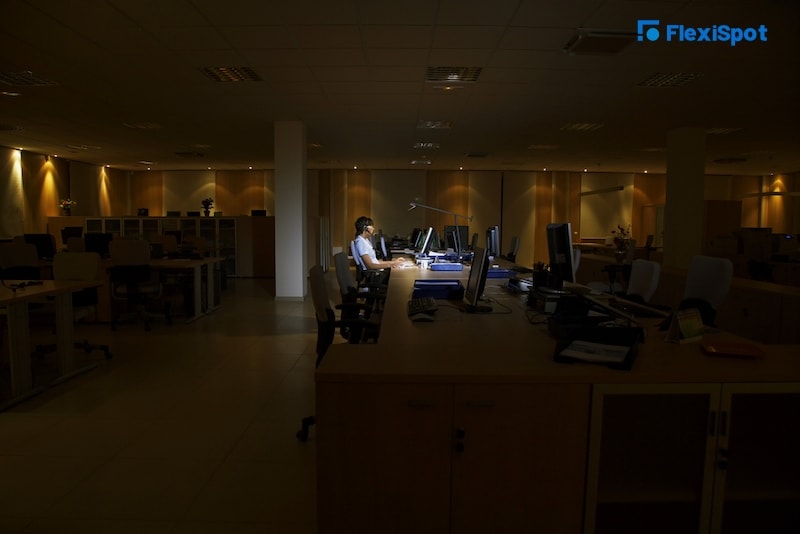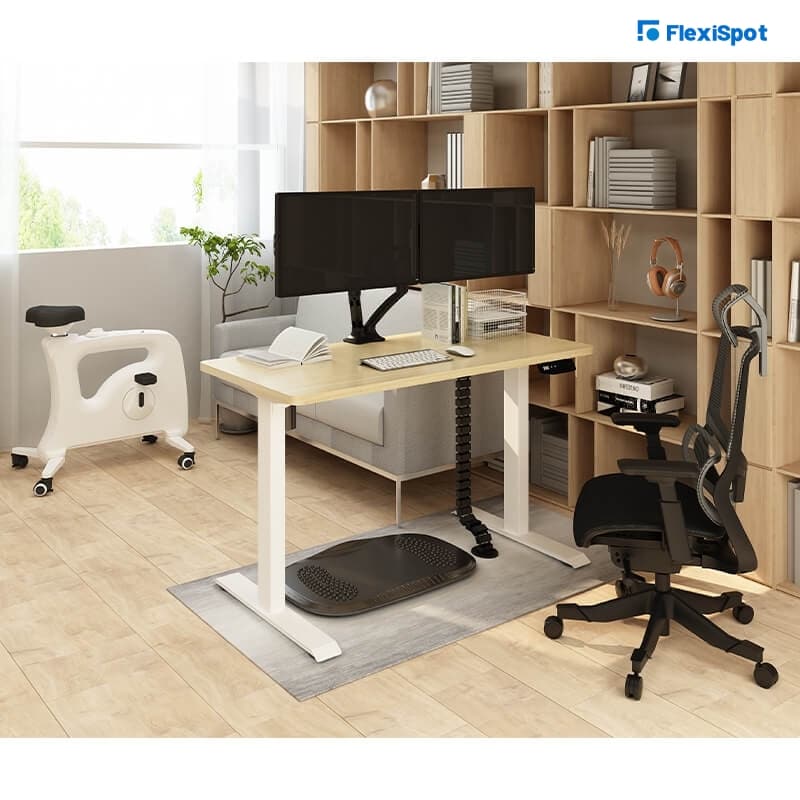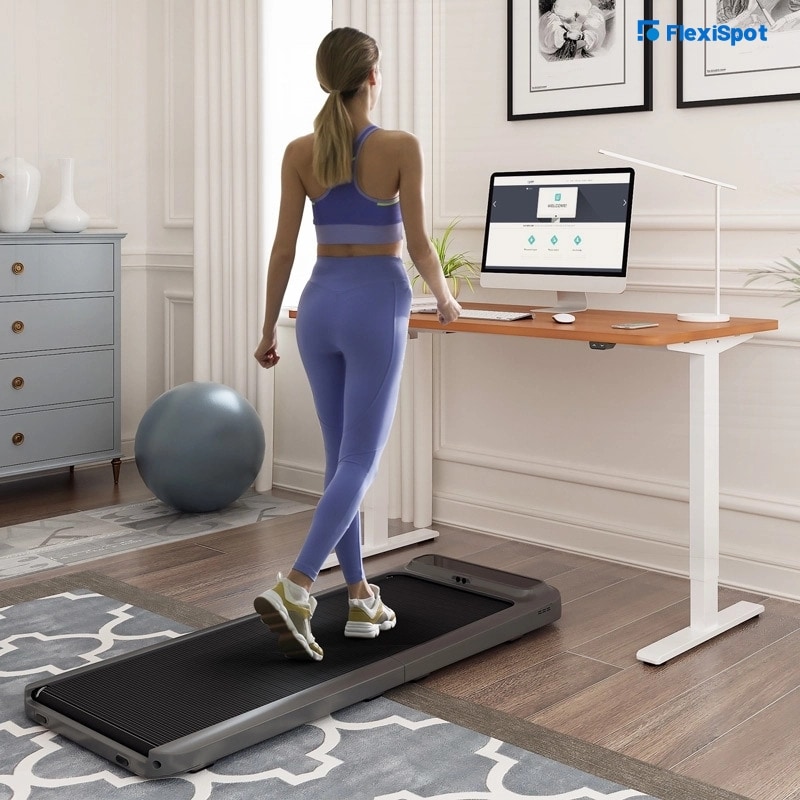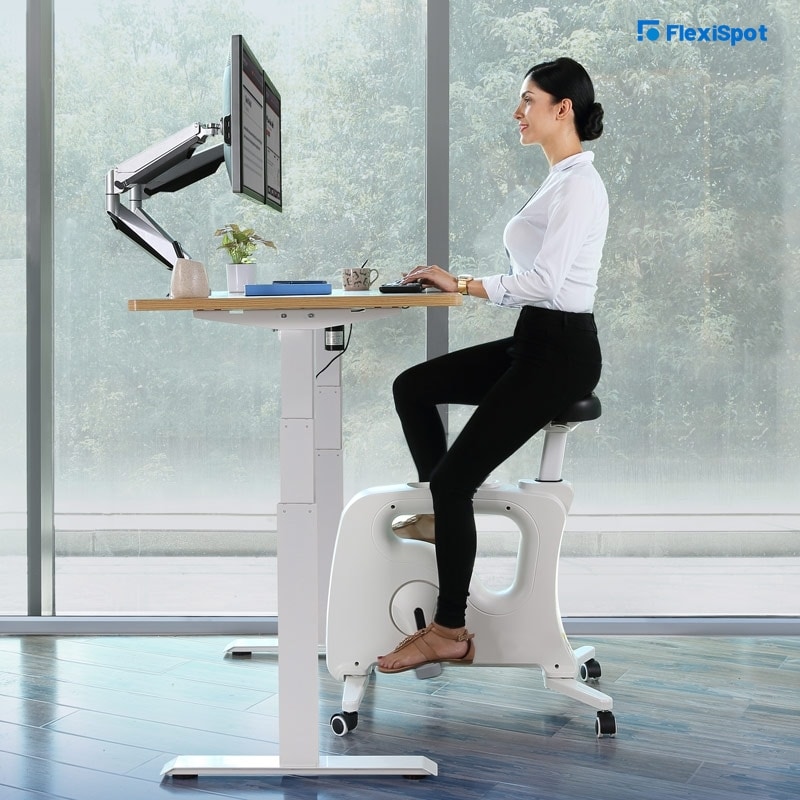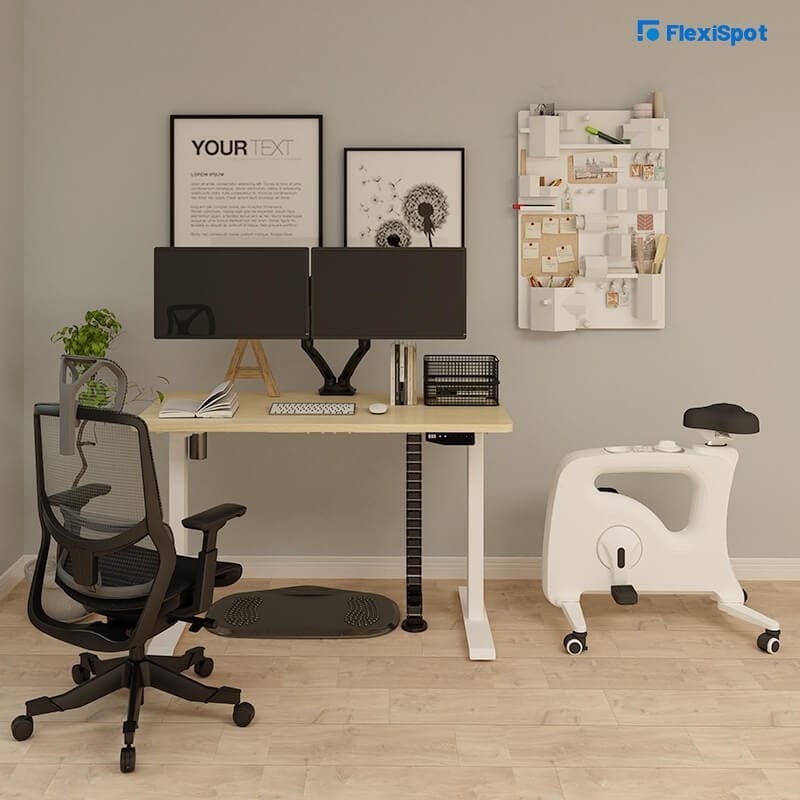An ergonomic workstation is considered safe, efficient, and comfortable for the employee. Ergonomics aims to decrease fatigue and injuries while increasing comfort, productivity, job satisfaction, and safety. The staggering annual workplace injuries statistics might lead one to think that workplace injuries are inevitable. That’s not the case. A well-designed workstation should mitigate any chances of a work-related injury.
Ergonomic risks are conditions that wear out the body or cause injury to the workers. These factors include heavy lifting, push or pulls that require significant effort, overhead work, contact stress, excess pressure, vibrations, force, awkward postures for extended periods, or repetitive tasks that introduce discomfort. Frequent occurrence of these factors or the occurrence of multiple of the risk factors is a known contributor to the development of musculoskeletal disorders amongst millions of workers globally.
To mitigate these problems, we need first to understand just what precisely ergonomic risks are and how they affect health and productivity in the workplace.
Common Ergonomic Hazards in Modern Offices and Their Solutions
Whether you’re working in a public office or a privately owned organization, ergonomic hazards are a constant and real threat in the modern office. The following are some of the most common ergonomic risks encountered in modern offices.
Poor Ventilation and Air Quality
Work-related asthma and other respiratory ailments, chemical sensitivities, and allergies are several health conditions aggravated by poor ventilation. To avert these problems, an office space needs to be mindful of the air quality in the office.
Some of the contributors to poor air quality include:
Insufficient air conditioning units and dirty filters or ducts
Office equipment that emits pollutants, such as printers and copiers
Chemical fumes from cleaners and other office supplies
Water leaks and fungal growth
Poor design or layout of the office space, which can lead to inadequate airflow
Under or over humidity
Unhygienic work situations.
Furniture and equipment that blocks airflow, such as cubicles or large pieces of furniture
Clutter which can create heat build-up and stagnant air pockets
Solutions
Poor air quality is generally caused by two factors: insufficient fresh air intake (insufficient ventilation) and the release of chemicals into the air due to the nature of the work.
To mitigate poor air quality, offices can undertake a few things.
Install an effective HVAC system to help regulate humidity levels and ensure proper ventilation
Cooling and air conditioners maintenance
Use an air purifier to remove pollutants from the air.
A regular surface wipes down to remove dirt, grime, and other deposits on the surfaces and floor.
Remind the employees to discard waste properly to ward off fungal and bacterial infestation.
Open windows to allow fresh air in and circulate stale air out. Increase the number of windows if possible.
Add plants or trees to the office space, as they act as natural filters.
Reduce the number of people in the office at one time.
Avoid smoking indoors.
Poor Lighting
It goes without saying that poor lighting is detrimental to anyone exposed to it, both short and long-term. For instance, poor lighting during a late shift could cause employees to stumble against furniture or equipment and potentially injure themselves.
Insufficient lighting is also a significant cause of eye strain, which affects productivity. Not to mention that continuous strain in low light causes headache, accelerates fatigue, and could lead to irreparable damage to one’s eyesight.
Excessive light is no better. Employees subjected to strong beams of light struggle just as much focusing on their screens or files. Light reflection is also responsible for sensory overload to the pupils, which causes headaches, migraines, associated nausea, and a lot of discomforts when handling tasks.
These are some of the common contributors to poor lighting
Glare on computer screens can be caused by light shining directly onto the screen or by reflections from other surfaces in the room.
Insufficient task lighting can be caused by using the wrong type of light fixture, not positioning the light fixtures correctly, or using lamps with low wattage bulbs.
Lamps that are too bright or too dim can cause eye fatigue and make it difficult to see clearly.
Overuse of fluorescent lighting.
Exterior light shining into the office
Poor interior design layout (dark corners, few or no windows)
Dust or dirt on light bulbs or light fixtures decreases the amount of light emitted from a fixture.
Damaged or broken light fixtures.
Windows that are covered with blinds or curtains.
Furniture that blocks the windows.
Solutions
Make sure that your office has plenty of natural light that’s evenly distributed.
Ask an expert for the right bulbs or light fixtures to install. Ask for more wattage if the fixtures are not providing enough light.
Replace any fluorescent light bulbs with LED bulbs, which are more efficient and provide better lighting
Provide desk lamps for more personalized control over the lighting situation.
Ensure to put blinds for sunny afternoons
Avoid highly reflective wall paints color choices like pearl white.
Adjust the brightness of your computer screen to make it comfortable for you to look at.
If necessary, wear glasses or contact lenses that protect your eyes from harmful UV rays.
Take breaks every 20 minutes to give your eyes a chance to rest.
Move furniture around so that there are more open spaces and fewer places where sunlight cannot reach.
You can also try using mirrors to reflect light into darker areas of the office.
Poorly Designed Workstations
The workstation's architecture is the first step in avoiding all ergonomic risks. Poorly designed workstations contribute to office ergonomic risks by forcing workers to adopt awkward, uncomfortable, and potentially harmful postures.
On the other hand, a sound workstation design should consider the user's size, reach, and strength. For the best results, let the space work around the people instead of having the people work with what the space provides.
Some common poor design features that can lead to aches, pains, worker discomfort, awkward posture, and workplace dissatisfaction include:
Using the wrong type of chair
Workstations that are too low or too high
Inadequate space for working in comfort/ No room to move around
Lack of proper support for the arms and wrists.
Too many cables cluttering up the work area
Lack of proper lighting
Poor screen visibility or placement
Awkward reach for tools or materials
Solutions
Start by considering the distance between individual workspaces. Assign enough legroom to the employees- considering the tallest people.
Ensure that employees can take about 2 steps in each direction to allow a comfortable stretch without interfering with their colleagues.
Make sure your work surface is at the correct height so that you're not hunching over or straining your neck looking up/down.
Adjust the height of your chair and desk so that your arms are bent at a 90-degree angle when you're sitting and typing. This will help keep your shoulders down and minimize strain on your neck and back.
Position the desks in optimal positions, ensuring everyone gets natural lighting.
Use a footrest if needed, and use a monitor stand or laptop riser.
Install carpeting to cushion the feet.
Use vertical storage to increase the floor space for additions like standing desks, under-desk treadmills, under-desk bikes, etc.
Ensure that the storage solutions are not too high or cause the employee to stretch too far when reaching for things.
Most importantly, make sure that all of your equipment is adjustable to position it in a way that is comfortable for each employee.
Infrequent Physical Activity
Infrequent physical activity can contribute to ergonomic risks in the office by causing people to become sedentary. When people are sedentary, they can experience several health problems, including obesity, heart disease, and diabetes. Additionally, when people are sedentary, they are also more likely to experience musculoskeletal problems, such as back pain and neck pain.
Solutions
To reduce the risk of developing these problems:
It is essential for office workers to get up and move around every hour or so. An excellent way to do this is to use a timer or an app on your phone that alerts you when it's time for your break.
Employers should provide workers with access to break rooms to move around and stretch during their break times.
Get enough exercise; at least 30 minutes per day is recommended.
Install a standing desk or use a treadmill desk to be more active while you work.
Take part in a company-wide fitness challenge or wellness program.
Arrange a walking or biking group to take regular breaks outdoors together.
Repetitive Strain and Forced Actions
Repetitive strain injuries (RSI) are a type of musculoskeletal injury that can occur due to repetitive tasks, forceful actions, or prolonged vibration. RSIs are caused by the overuse or misuse of muscles, tendons, joints, and nerves. Symptoms may include pain, numbness, tingling, swelling, weakness, and cramping in the affected area.
The most common types of RSIs are:
Carpal tunnel syndrome (pain and numbness in the hand and arm)
Tendonitis (inflammation of a tendon)
Tenosynovitis (inflammation of a tendon sheath)
Bursitis (inflammation of a bursa)
Epicondylitis
In many cases, RSI is caused by movements that are repeated over and over again without giving the muscles or joints a break. This constant jarring can eventually lead to inflammation and pain. RSI can be caused by activities such as typing on a computer keyboard.
Forceful actions can refer to either doing an activity with too much force (such as using excessive weight when lifting) or performing an action that is unnatural for the body and results in muscle tension. Both of these can lead to pain and inflammation in the tissues involved.
Solutions
Here are some tips to help reduce the risk of repetitive strain and forced actions at the office:
Make sure to sit up straight with a good posture. This will help minimize the strain on your back and neck.
Adjust your seating position so that you're sitting up straight with both feet flat on the ground.
You may also want to consider using a footrest if you have trouble keeping both feet flat on the ground.
When lifting or carrying items, use proper lifting techniques. Bend at the knees, not at the waist, and keep your back straight.
Take regular breaks throughout the day. Get up and move around, or take a few minutes to stretch out your muscles.
Make sure your keyboard is in good alignment with your wrists. This means that your wrists should be in line with your forearms, and your keyboard should be at a comfortable height, so you don't have to reach up or down for the keys.
Reduce mouse use by using the arrow keys and other shortcuts on your keyboard as much as possible. If you must use a mouse, make sure to keep it close to your body and use light touches.
Awkward Posture
An awkward posture is when the body is not in a neutral, relaxed position. It can also mean an improper alignment of the spine. Awkward postures put unnecessary stress on muscles and tendons, which can cause pain and discomfort, especially in the neck, shoulders, and back. They also increase the risk of developing musculoskeletal disorders (MSDs), such as carpal tunnel syndrome, lower back pain, and neck pain.
Poor posture can be caused by many factors, such as sitting for long periods, incorrect lifting techniques, or genetics.
Solutions
The best way to correct awkward posture is;
Through exercise and physical therapy. Exercises that can help improve your posture include stretches for the back and neck and exercises that focus on strengthening the core muscles.
Physical therapy can help identify any muscle imbalances you may have and provide you with specific exercises to correct them.
Maintain good posture throughout the day by sitting up straight.
Take breaks often to move around and stretch.
Workstations That Aren't Tailored to the Individual Worker
Each individual has a unique work style and preferences, so it's essential to have a workstation explicitly tailored to that individual. Additionally, it's essential to take into account the type of work being done when setting up a workstation. For example, if you're left-handed and your workstation is set up for right-handed people, you'll constantly be fighting against the natural ergonomics of your body.
Noise Pollution
Noise pollution is an ergonomic risk because it can cause hearing damage. The Occupational Safety and Health Administration (OSHA) has set the threshold at 85 decibels for an eight-hour day. Workers should wear personal protective equipment (PPE) when noise reaches that level.
Noise pollution in the office can be caused by:
Loud conversation
Telephones ringing
Fax machines printing
Keyboards clicking
People shouting or talking loudly on the phone
Constant noise pollution can have several associated effects, including:
Reduced work productivity
Psychological problems such as stress, depression, and anxiety
Sleep disturbance
Heart disease
Tinnitus (ringing in the ears)
Hearing loss
Solutions
There are a few ways to prevent noise pollution and noise interference in the office.
One way is to make sure that everyone in the office is aware of the importance of keeping noise levels down.
Soundproofing the walls
Using earplugs or noise-canceling headphones if it's especially noisy.
Keep electronic devices such as printers and computers turned off when not in use.
It's important to have a good layout for the office space so that employees are not too close together and can work without disturbing one another.
Slips, Trips, and Falls
Slip, trip, and fall injuries are generally caused by losing balance or traction. Abandoned spillage, wet floors, exposed wires, unsteady worktops, unequal floors, and loose rugs are all common causes of slips, trips, and falls.
Slip, trip, and fall injuries can cause fractures, strains, and sprains. These injuries can also lead to serious head injuries if the individual falls from a height. To reduce your risk of experiencing a slip, trip, or fall injury, be sure to exercise caution when walking in areas that are slick or uneven, and always use handrails when ascending or descending stairs.
There are many contributing factors to slips, trips, and falls in the workplace. Some of these include:
Improper footwear
Messy or cluttered work areas
Inadequate signage or lighting
Icy or wet surfaces
Worn carpeting or flooring
Uneven surfaces
Obstructed areas
Tools or equipment left lying around
Solutions
Make sure your work area is clean and free of clutter
Wear appropriate shoes with non-slip soles
Use caution when walking on wet or icy surfaces
Avoid carrying or moving heavy objects by yourself
Be aware of your surroundings and watch where you're walking.
Ensure that cords and cables are properly secured and out of the way
Extreme Temperature
Extreme heat can be an ergonomic risk. When the body is subjected to high temperatures, it responds by increasing blood circulation and perspiration to cool down. This increased blood flow and sweating can lead to fatigue, stroke, and exhaustion. In scorching weather, it's essential to stay hydrated and take breaks often to avoid heat-related health problems.
On the same note, when the body is exposed to cold, it pulls blood away from the extremities and conserves it in the core to maintain vital functions. This can lead to a loss of sensory feedback, dexterity, and restricts blood flow to the hands and feet, impairing muscle strength and balance. In extreme cases, hypothermia can set in.
Solutions
Here are tips to help you beat the heat at work
Drink plenty of fluids, especially water.
Put ice water or cold drinks in the break room fridge
Dress for the weather. Wear lightweight, natural fabrics such as cotton and linen instead of heavy materials like wool.
Take breaks to cool off. Find a shady spot outdoors or go for a walk in the cooler parts of the day.
Use a desk fan to cool down.
Adjust your diet to include more cooling and hydrating foods such as cucumbers, melons, and salads with vinaigrette dressings
Opening up windows and letting in a breeze
Below are some solutions that can help employees deal with freezing temperatures at the office.
Wear hats, gloves, and warm coats.
Employers can install heating systems in the office to help keep employees warm.
Employers can create a policy that allows employees to work from home if the temperature in the office is too cold.
Carry blankets or space heaters to use in your cubicles or offices.
Take hot drinks like soups or hot chocolate, to help keep warm.
Take breaks and move around regularly, even if it's just for a few minutes at a time. This will help your blood flow and keep you from getting too cold.
In Conclusion
A workplace is a place where ergonomic risks are plentiful. Some of these risks have been discussed in this blog post, but there are many more to be mindful of. Ergonomic risks can be mitigated by investing in ergonomics training, implementing changes to the work environment, and more. But not all of the options we provided are feasible for every business or budget, so you must identify your priorities first before deciding what steps you need to take next. Conducting an ergonomic risk assessment may be an excellent place to start. Contact us today for more information on how we can help you keep employees healthy and happy with our comprehensive workplace solutions!


